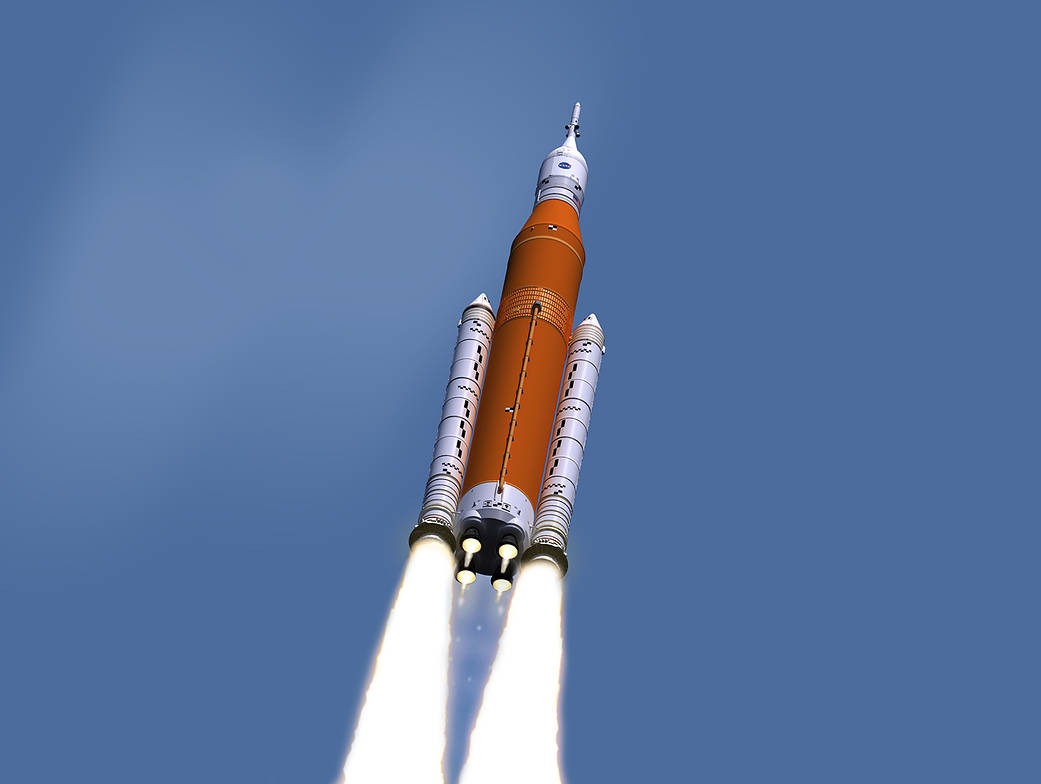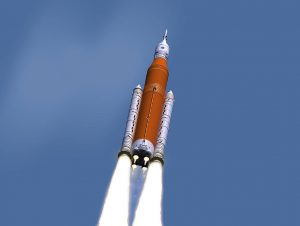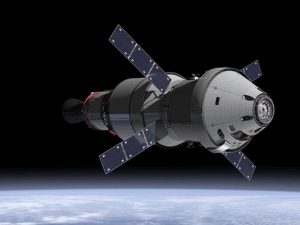Back to the Moon
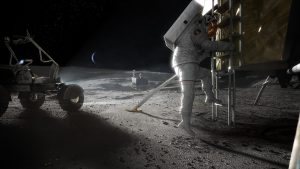
Artemis Mission. Credit: NASA
In our last blog, we looked at Apollo 16, the penultimate Moon landing.
The Apollo project ended in December 1972, when Apollo 17 returned to Earth.
Now NASA is looking to return astronauts to the Moon.
Their new project is called Artemis after the Greek goddess of the Moon.
The target date for a landing is 2024.
The new Moon rocket is the Space Launch System, SLS.
It will make its first test flight, an unmanned trip round the Moon, in summer 2022.
SLS launch, artist impression. Credit: NASA
Beginnings
In 2011, the American Congress directed NASA to develop a replacement for the Space Shuttle.
It would take advantage of components used for the Shuttle and the expertise of its workforce.
The rocket would have a number of main engines together with booster rockets.
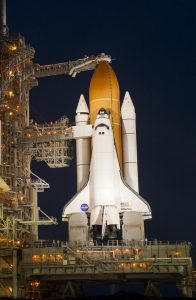
Space Shuttle. Credit: NASA
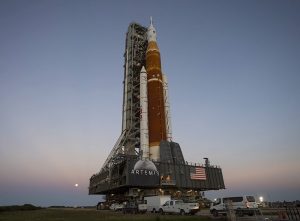
SLS roll out. Credit: NASA
The Artemis program was conceived later, in 2017.
It’s aims include landing the first woman and first person of colour on the Moon.
It will use SLS as the launch vehicle to take a new spacecraft to the Moon.
That spacecraft is named Orion.
If all goes well, SLS will eventually be used to take people to Mars.
Orion spacecraft. Credit: NASA
We’ll return to Artemis and Orion in later blogs but this time we’ll focus on the launch vehicle, the SLS.
SLS
The name of the new rocket sounds prosaic compared to rockets of the past.
Names like Atlas, Thor, Titan and Saturn gave an instant impression of power.
But the Space Launch System is not a simple rocket.
It is adaptable to different configurations for specific missions.
It is what it says on the tin, a launch system.
Core Stage
The core stage is the backbone of the rocket.
It supports the weight of the upper stage and Orion module.
Booster rockets modelled on the Shuttle boosters are attached to the core.
Thrust comes from four RS-25 engines.
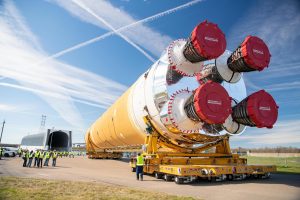
SLS core stage. Credit: NASA
The core stage is 67 metres tall (212 feet) and made of aluminium.
It’s diameter is the same as the Space Shuttle’s external tank, 27 feet or 8.4 metres.
Orange spray-on foam insulates the liquid hydrogen and liquid oxygen inside.
The core stage will fire for around 8 minutes.
In this short time, the rocket will travel to an altitude of about 100 miles.
Then an upper stage will fire to take the Orion module on its lunar journey.
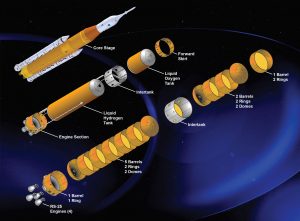
SLS core stage diagram. Credit: NASA
The core stage contains 10 barrel sections, 4 dome sections and 7 rings.
These components join to form the liquid oxygen and liquid hydrogen fuel tanks and the engine section.
Booster rockets
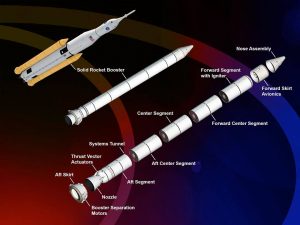
SLS booster rockets. Credit: NASA
The SLS booster rockets are the most powerful ever made.
They stand 177 feet tall and 12 feet wide.
They will fire for about two minutes, burning 6 tons of propellant every second!
Together the twin boosters provide 75% of the initial thrust of the SLS.
Exploration Upper Stage, EUS
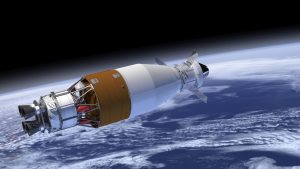
SLS Exploration Upper Stage & Orion. Credit: NASA
Once in Earth orbit, the upper stage rocket will fire to take Orion to the Moon.
Whilst the core stage remains the same, the upper stage will vary according to mission needs.
The EUS will be propelled by a single RL-10 rocket for the first three Artemis missions, including the Moon landing.
Later missions will have four RL-10 rockets, carrying the crewed Orion module and more cargo.
What happens next
SLS should launch on its first mission, Artemis 1, in the summer of 2022.
This will be an unmanned test flight around the Moon.
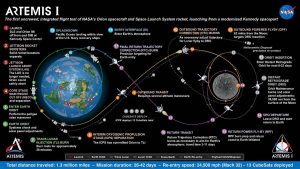
Artemis 1 flight plan. Credit: NASA
The Orion crew capsule will contain two female mannequins.
They will have sensors to detect radiation from solar storms and cosmic rays.
One dummy will be protected with an AstroRad vest. whist the other will be unprotected.
This is a crucial mission. Its outcome will have a direct effect on when humans will land on the Moon again.
You can go to the Moon!
You can send your name to the Moon with the first Artemis landing.
To find out how, simply click send me to the Moon.
I’m going! Here’s my boarding pass.
See you there!
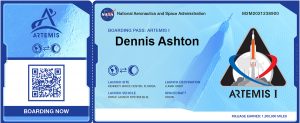
The author: Dennis Ashton is a Fellow of the Royal Astronomical Society and a Wonderdome presenter.
Would you like to hear more Astronomy news?
Do you want to to find out about our upcoming public events?
Follow WonderDome Portable Planetarium on Twitter and Facebook or go to our web site wonderdome.co.uk!

